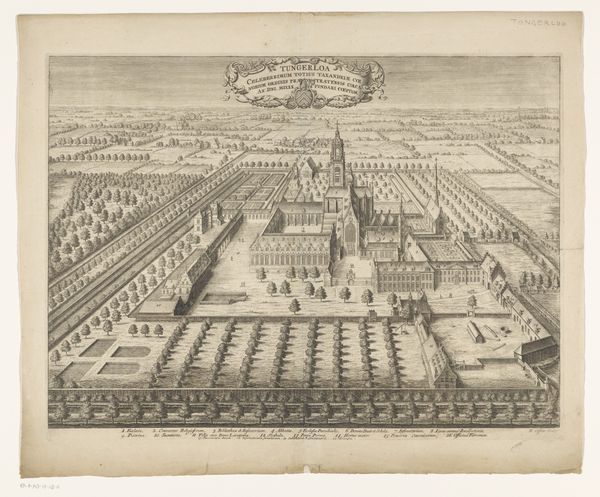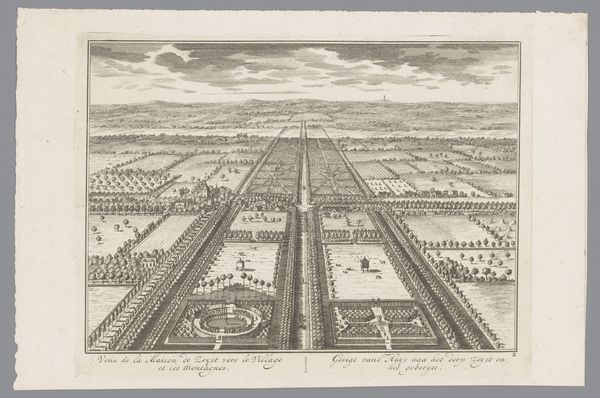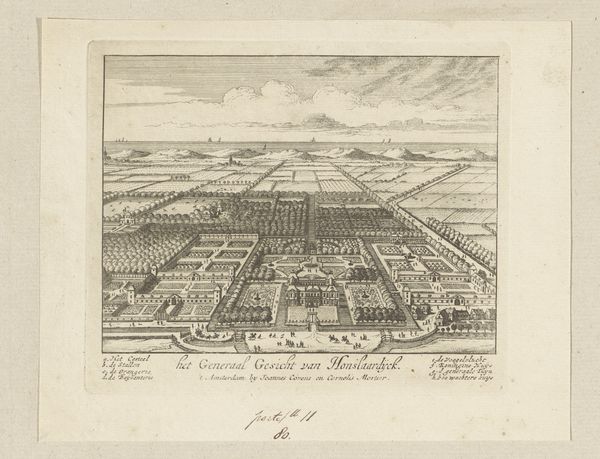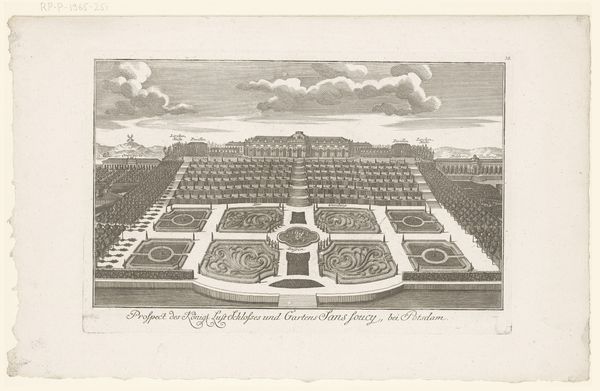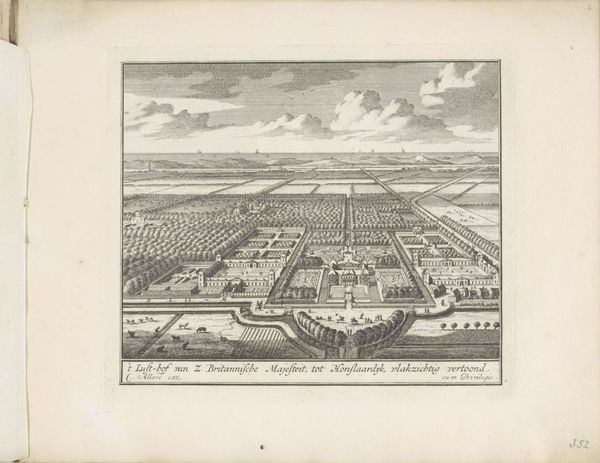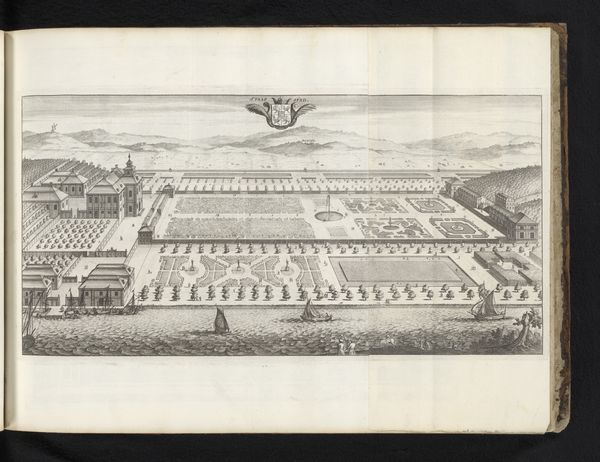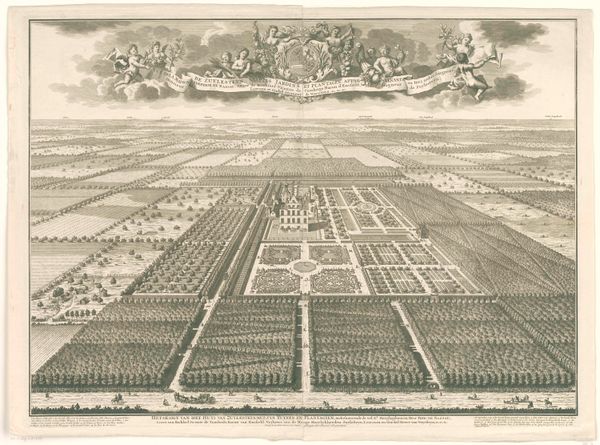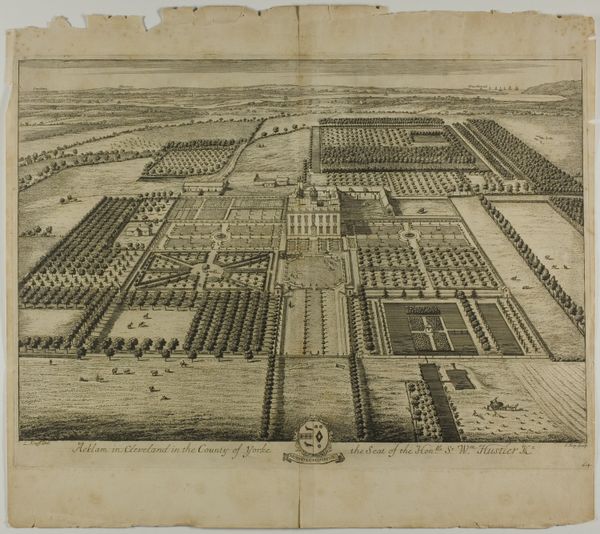
Landgoed Clingendael in vogelvlucht vanuit het zuiden naar het noorden gezien 1710 - 1767
0:00
0:00
print, etching
#
baroque
# print
#
etching
#
landscape
#
etching
#
cityscape
Dimensions: height 398 mm, width 482 mm
Copyright: Rijks Museum: Open Domain
Curator: This etching, titled *Landgoed Clingendael in vogelvlucht vanuit het zuiden naar het noorden gezien*, attributed to Daniël Stopendaal, and created sometime between 1710 and 1767, offers an aerial view of the Clingendael estate. The rigorous detail makes the estate seem so manicured, controlled, and a little sterile. What stands out to you? Editor: I'm struck by the almost mathematical precision of the layout. Every tree, every hedge seems to be perfectly aligned. It creates a strong sense of order, but I wonder, does it also suppress a certain naturalness? How do you approach interpreting such a visually structured piece? Curator: From a formalist perspective, the arrangement of elements – the geometric patterns, the calculated repetition – transcends mere representation. Notice how the lines of the garden beds and the avenues of trees converge, creating a perspectival pull that draws the eye into the composition. What effect does this have? Editor: I see what you mean; it certainly leads the eye, but it also feels somewhat restrictive, doesn’t it? It's so controlled. Curator: Precisely. The artist has orchestrated the spatial relationships, imposing a structured framework on nature itself. The varying textures achieved through the etching technique enhance the three-dimensionality of the landscape. Observe how light and shadow delineate form and create depth, directing the viewer's gaze. Can you describe the contrast and patterns you observe in this piece? Editor: The stark contrast between the meticulously detailed gardens and the hazy, almost abstract, background emphasizes the cultivated space. And there are symmetrical relationships; what I notice now is that within this landscape of apparent rigid uniformity, there is such remarkable subtlety achieved with various strokes that creates light and depth... Curator: Indeed. It speaks to how we impose structure onto the world, and the degree to which an artist might play with visual strategies. By analyzing the formal devices at play, we discover that Stopendaal offers not just a landscape but also an intricate choreography of form. Editor: So, in decoding the formal relationships, we come to see this landscape as not merely a view, but an ordered, aesthetic construct. That's enlightening.
Comments
No comments
Be the first to comment and join the conversation on the ultimate creative platform.



